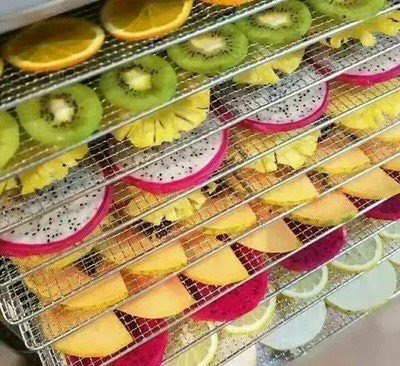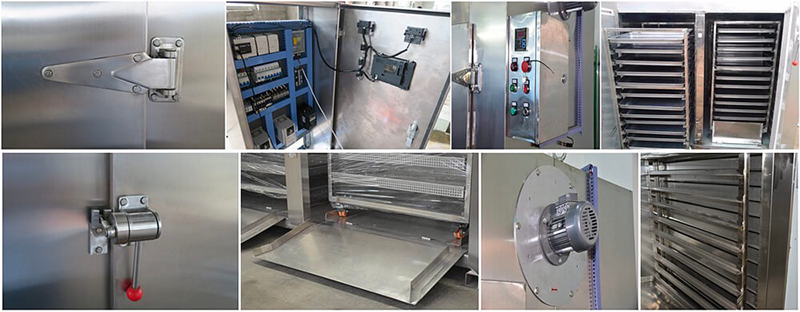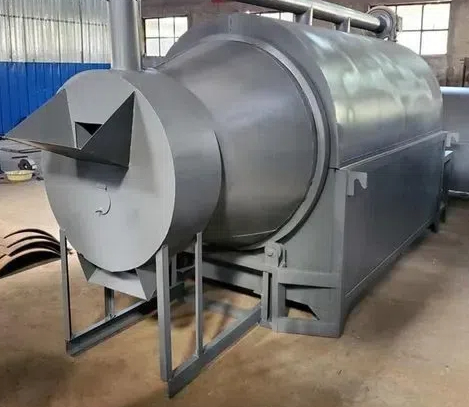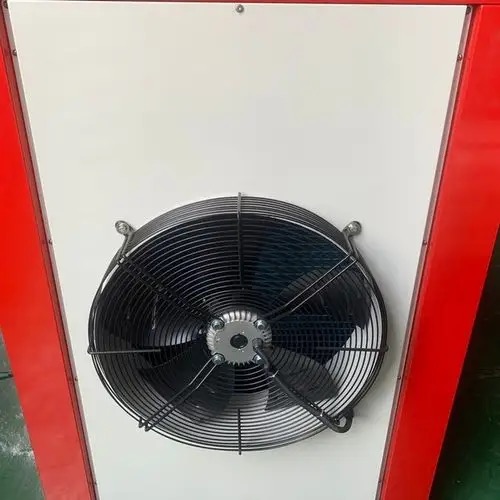
Content Menu
● Introduction to Food Drying Technology
● The Food Drying Process
● Traditional vs. Modern Drying Methods
● What is a Heat Pump Dryer?
● Benefits of Heat Pump Dryers
● Applications of Heat Pump Dryers
● How Does a Heat Pump Dryer Work?
● Advantages Over Traditional Dryers
● California Heat Pump Dryer Rebate Program
● Key Features of the Rebate Program
● Benefits of Participating in the Rebate Program
● Combining Incentives for Maximum Savings
● Choosing the Right Heat Pump Dryer
● Capacity
● Energy Efficiency Ratings
● Features
● Brand Reputation
● Conclusion
● Related Questions
>> 1. What types of food can be dried using a heat pump dryer?
>> 2. How does a heat pump dryer compare to traditional drying methods?
>> 3. What are the eligibility requirements for California's heat pump dryer rebate?
>> 4. Can I apply for multiple rebates at once?
>> 5. How long does it take to receive my rebate after applying?
Introduction to Food Drying Technology
Food drying is an ancient preservation method that has evolved significantly over the years. Today, modern food drying machines, particularly heat pump dryers, have revolutionized the industry by offering energy-efficient and effective solutions for food preservation. As a leading manufacturer of food drying machines in China, we provide OEM services to international brands, wholesalers, and producers. This article explores the benefits of heat pump dryers, their operation, and how they can be integrated with California's heat pump dryer rebate program.

The Food Drying Process
Food drying is a crucial process for extending the shelf life of various food products. It removes moisture from food items, inhibiting the growth of bacteria, yeasts, and molds. The drying process not only preserves food but also concentrates flavors and nutrients.
Traditional vs. Modern Drying Methods
Traditional drying methods include sun drying, air drying, and oven drying. While these methods are cost-effective, they often lead to uneven drying and can compromise the quality of the food. In contrast, modern drying technologies like heat pump dryers ensure uniform drying and better retention of nutritional values.
What is a Heat Pump Dryer?
A heat pump dryer is an advanced drying system that utilizes a heat pump to transfer heat from the environment to the drying chamber. Unlike traditional dryers that generate heat through combustion or electric resistance, heat pump dryers recycle heat, making them highly energy-efficient. This technology not only reduces energy consumption but also preserves the quality of the food being dried.
Benefits of Heat Pump Dryers
1. Energy Efficiency: Heat pump dryers consume significantly less energy compared to conventional dryers. They can reduce energy costs by up to 50%, making them an economical choice for businesses and households alike.
2. Quality Preservation: The lower drying temperatures used in heat pump dryers help retain the nutritional value, color, and flavor of the food. This is particularly important for fruits, vegetables, and herbs.
3. Environmentally Friendly: By utilizing renewable energy sources and reducing greenhouse gas emissions, heat pump dryers contribute to a more sustainable future.
4. Versatility: These dryers can be used for a wide range of products, including fruits, vegetables, meats, and even flowers.
Applications of Heat Pump Dryers
Heat pump dryers are versatile machines suitable for various applications:
1. Fruit Drying: Ideal for producing dried fruits such as apples, bananas, and strawberries while maintaining their flavor and nutrients.
2. Vegetable Drying: Perfect for dehydrating vegetables like carrots, peppers, and tomatoes for long-term storage or snacks.
3. Herb Drying: Excellent for preserving herbs like basil and oregano without losing their essential oils.
4. Meat Drying: Used in jerky production where moisture removal is crucial for shelf stability.
5. Flower Drying: Suitable for preserving flowers for decorative purposes or potpourri.

How Does a Heat Pump Dryer Work?
Heat pump dryers operate on a closed-loop system. Here’s a simplified breakdown of their functioning:
1. Air Intake: Ambient air is drawn into the dryer.
2. Heat Exchange: The air passes through an evaporator coil where it absorbs heat from the refrigerant.
3. Heating: The heated air is then circulated into the drying chamber.
4. Drying Process: As the warm air passes over the food items, moisture evaporates.
5. Condensation: The moisture-laden air is then passed through a condenser where it cools down and releases moisture.
6. Recycling: The cooled air is reheated and recirculated back into the drying chamber.
This process continues until the desired moisture content is achieved in the food products.
Advantages Over Traditional Dryers
Heat pump dryers offer several advantages over traditional drying methods:
1. Consistent Results: They provide uniform heating across all items in the dryer, ensuring consistent moisture content.
2. Lower Operating Temperatures: This minimizes thermal degradation of sensitive foods while enhancing flavor retention.
3. Reduced Energy Consumption: Their efficiency leads to lower operational costs over time.
California Heat Pump Dryer Rebate Program
California has implemented various incentive programs to encourage the adoption of energy-efficient appliances, including heat pump dryers. The California Heat Pump Dryer Rebate program provides financial assistance to homeowners and businesses that install eligible heat pump dryers.
Key Features of the Rebate Program
1. Rebate Amounts: Homeowners can receive rebates ranging from $200 to $840 depending on the type of installation and whether it meets ENERGY STAR certification standards.
2. Eligibility Criteria: To qualify for these rebates, applicants must purchase ENERGY STAR certified heat pump dryers and submit proof of purchase along with their application.
3. Application Process: Applicants need to fill out a rebate application form available on California's energy efficiency program website and provide necessary documentation such as receipts and installation details.
Benefits of Participating in the Rebate Program
1. Financial Savings: The rebates significantly reduce upfront costs associated with purchasing energy-efficient appliances.
2. Increased Energy Efficiency: By upgrading to a heat pump dryer, participants contribute to overall energy savings in their homes or businesses.
3. Environmental Impact: Reducing energy consumption helps decrease carbon footprints and supports California's sustainability goals.
Combining Incentives for Maximum Savings
For businesses and homeowners looking to maximize their savings on energy-efficient appliances, understanding how to combine various incentives is crucial. Here are some strategies:
1. Federal Tax Credits: In addition to California's state rebates, homeowners may also qualify for federal tax credits under programs designed to promote energy efficiency.
2. Utility Company Rebates: Many utility companies offer additional rebates for customers who install energy-efficient appliances. Check with your local provider for specific offers.
3. Local Government Programs: Some cities or counties may have their own rebate programs that can be combined with state and federal incentives.
4. Financing Options: Look into financing options that may offer lower interest rates for energy-efficient upgrades.
5. Consultation Services: Engaging with energy advisors or consultants can help identify all available incentives tailored to your specific situation.
Choosing the Right Heat Pump Dryer
When selecting a heat pump dryer for your business or home use, consider several factors:
Capacity
Choose a dryer that fits your production needs—whether you are processing small batches or large quantities of food products.
Energy Efficiency Ratings
Look for models with high ENERGY STAR ratings as they will provide better long-term savings on energy costs.
Features
Consider additional features such as programmable settings, humidity control options, and ease of cleaning which can enhance usability.
Brand Reputation
Research reputable brands known for quality manufacturing and customer support in order to ensure reliability and service availability.
Conclusion
The integration of heat pump technology into food drying processes represents a significant advancement in both efficiency and sustainability. For manufacturers and consumers alike, taking advantage of programs like California's heat pump dryer rebate can lead to substantial savings while contributing positively to environmental goals. As we continue to innovate in food preservation technology, embracing these advancements will ensure better quality products while promoting energy efficiency.By investing in modern heat pump dryers not only do you improve your operations but also align with global sustainability trends—making it a win-win situation for both your business and our planet.

Related Questions
1. What types of food can be dried using a heat pump dryer?
A variety of foods can be dried using heat pump dryers including fruits, vegetables, meats, herbs, and flowers.
2. How does a heat pump dryer compare to traditional drying methods?
Heat pump dryers are more energy-efficient and preserve food quality better than traditional methods due to lower drying temperatures.
3. What are the eligibility requirements for California's heat pump dryer rebate?
Applicants must purchase ENERGY STAR certified heat pump dryers and provide proof of purchase when applying for rebates.
4. Can I apply for multiple rebates at once?
Yes, you can stack California's rebates with federal tax credits and utility company incentives for maximum savings.
5. How long does it take to receive my rebate after applying?
Typically, once your application is approved, you can expect your rebate check within 6 to 8 weeks.












